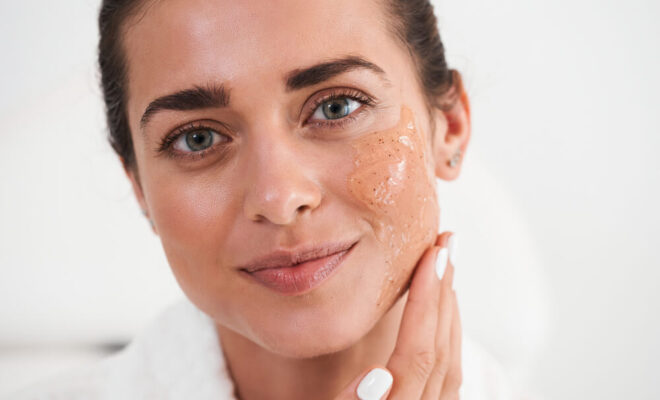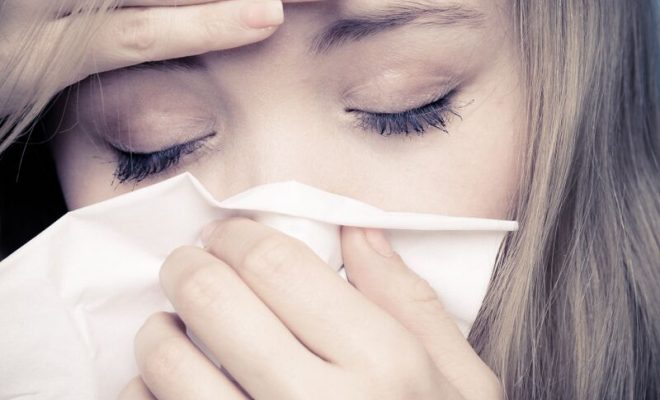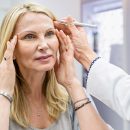Discover the Secret to Flawless Skin with Dark Spot Skin Peel

Key Takeaways:
- Dark spots, also known as hyperpigmentation, are areas of the skin that appear darker than the surrounding skin tone.
- Causes of dark spots include sun exposure, acne scars, hormonal changes, and aging.
- There are different types of dark spots, such as sunspots, post-inflammatory hyperpigmentation, and melasma.
- The Dark Spot Skin Peel is a professional-grade peel designed to target and lighten dark spots.
- The peel works by exfoliating the skin and inhibiting melanin production.
- The Dark Spot Skin Peel reduces the appearance of dark spots, improves skin texture, enhances skin radiance, boosts collagen production, and minimizes fine lines and wrinkles.
- When choosing a dark spot skin peel, consider factors such as skin type, ingredients, concentration and pH, and brand reputation.
- Consult with a dermatologist or skincare professional for personalized recommendations.
- Follow the step-by-step guide for safe and effective use of the Dark Spot Skin Peel at home.
- Take precautions and safety measures, such as performing a patch test and using sunscreen.
- Be consistent, avoid overuse, and listen to your skin’s reaction when using the peel.
The quest for flawless skin is a never-ending journey. One of the most common skin concerns that people face is dark spots. These are areas of hyperpigmentation that can be caused by various factors such as sun damage, acne scars, hormonal changes, and aging. Dark spots can affect both men and women of all ages and skin types, and they often make individuals feel self-conscious about their appearance.
Understanding Dark Spots on the Skin
What are Dark Spots?
Dark spots, also known as hyperpigmentation, are areas of the skin that appear darker than the surrounding skin tone. They occur when an excess of melanin, the pigment that gives color to our skin, is produced in certain areas. Melanin is produced by specialized skin cells called melanocytes, and its production is influenced by various factors.
Causes of Dark Spots
There are several factors that can contribute to the development of dark spots on the skin:
Sun exposure: The most common cause of dark spots is sun damage. When the skin is exposed to the sun, it triggers the production of melanin as a defense mechanism. Over time, this can lead to the formation of dark spots.
Acne scars: Acne breakouts can leave behind dark spots that take months or even years to fade. This is known as post-inflammatory hyperpigmentation.
Hormonal changes: Hormonal fluctuations, such as those that occur during pregnancy or menopause, can trigger the overproduction of melanin and result in dark spots.
Aging: As we age, our skin’s ability to regenerate and repair itself slows down. This can lead to the accumulation of melanin in certain areas, resulting in dark spots.
Types of Dark Spots
There are different types of dark spots that can appear on the skin:
Sunspots: Sunspots, also known as solar lentigines or liver spots, are caused by excessive sun exposure. They usually appear as flat, brown spots on areas of the skin that are most exposed to the sun, such as the face, hands, and arms.
Post-inflammatory hyperpigmentation: These dark spots occur as a result of inflammation or injury to the skin, such as acne breakouts, burns, or cuts. They can vary in size and color, ranging from light brown to dark brown or black.
Melasma: Melasma is a common skin condition characterized by dark patches that typically appear on the face, particularly on the cheeks, forehead, and upper lip. It is often triggered by hormonal changes, such as pregnancy or the use of hormonal contraceptives.
The Benefits of Dark Spot Skin Peel
Introducing the Dark Spot Skin Peel
If you’re looking for an effective solution to diminish the appearance of dark spots and achieve a more even skin tone, the Dark Spot Skin Peel may be the answer. This innovative skincare treatment is designed to target and lighten dark spots, revealing a brighter and more youthful complexion.
The Dark Spot Skin Peel is a professional-grade peel that contains potent ingredients known for their skin brightening properties. It is formulated with alpha-hydroxy acids (AHAs), such as glycolic acid and lactic acid, along with other skin-nourishing ingredients.
How Does the Dark Spot Skin Peel Work?
The Dark Spot Skin Peel works by exfoliating the outermost layer of the skin, known as the epidermis. This helps to remove dead skin cells, dirt, and impurities that can contribute to the appearance of dark spots. The AHAs in the peel penetrate into the deeper layers of the skin, stimulating cellular turnover and promoting the growth of new, healthy skin cells.
In addition to exfoliation, the Dark Spot Skin Peel also contains ingredients that inhibit melanin production. This helps to minimize the formation of new dark spots and lighten existing ones.
Results and Benefits of the Dark Spot Skin Peel
The Dark Spot Skin Peel offers a range of benefits for those dealing with dark spots:
Reduces the appearance of dark spots: The peel’s exfoliating and skin brightening properties help to fade existing dark spots and even out the skin tone.
Improves skin texture: By exfoliating the skin, the peel helps to smooth out rough or uneven texture, leaving the skin soft and supple.
Enhances skin radiance: Regular use of the Dark Spot Skin Peel can help to improve overall skin radiance and luminosity, giving you a healthy and youthful glow.
Boosts collagen production: The peel stimulates collagen production in the skin, which can help to improve the elasticity and firmness of the skin over time.
Minimizes the appearance of fine lines and wrinkles: With continued use, the Dark Spot Skin Peel can help to reduce the appearance of fine lines and wrinkles, giving your skin a smoother and more youthful appearance.
It is important to note that results may vary depending on individual skin type and the severity of the dark spots. Consistency and patience are key when using the Dark Spot Skin Peel.
Choosing the Right Dark Spot Skin Peel
Factors to Consider When Choosing a Dark Spot Skin Peel
When selecting a dark spot skin peel, it is essential to consider the following factors:
Skin type: Different skin types have different needs and sensitivities. Look for a peel that is formulated specifically for your skin type to ensure optimal results and minimize the risk of irritation.
Ingredients: Pay attention to the ingredients list and look for key ingredients such as AHAs, vitamin C, and licorice extract, which are known for their skin brightening properties. Avoid peels that contain harsh chemicals or potential irritants.
Concentration and pH: The concentration and pH level of the peel can affect its efficacy and safety. It is recommended to start with a lower concentration and gradually increase it over time as your skin adapts to the peel.
Brand reputation: Do some research and read reviews to determine the reputation of the brand and the effectiveness of their dark spot skin peel. Look for brands that are known for their quality and have positive customer feedback.
Reviews and Recommendations
When considering a dark spot skin peel, it can be helpful to read reviews and recommendations from others who have tried the product. Look for testimonials from individuals with similar skin concerns to get an idea of the peel’s effectiveness.
Additionally, consulting with a dermatologist or skincare professional can provide valuable insights and recommendations tailored to your specific needs and skin type.
Consultation and Skin Analysis
If you are unsure about which dark spot skin peel is suitable for you, it is advisable to seek a professional consultation. A dermatologist or skincare expert can assess your skin and provide personalized recommendations based on your concerns and goals.
During the consultation, the professional may perform a skin analysis to determine the severity of your dark spots and identify any underlying skin issues that may need to be addressed. This information can help guide you in choosing the right dark spot skin peel and develop a personalized skincare regimen.
Using the Dark Spot Skin Peel at Home
Step-by-Step Guide to Using the Dark Spot Skin Peel
Using the Dark Spot Skin Peel at home is a straightforward process. However, it is essential to follow the instructions carefully to ensure safe and effective application. Here is a step-by-step guide:
Step 1: Cleanse your skin: Start by cleansing your skin to remove any dirt, oil, or makeup residues. This will allow the peel to penetrate the skin more effectively.
Step 2: Patch test: Before applying the peel to your entire face, perform a patch test on a small area of skin. This will help to determine if you have any adverse reactions or sensitivities to the peel.
Step 3: Apply the peel: Using a clean brush or cotton pad, apply a thin, even layer of the peel to your face, avoiding the eye area and any active breakouts. Leave the peel on for the recommended amount of time specified in the instructions.
Step 4: Neutralize the peel: After the recommended time has passed, neutralize the peel by using a neutralizing solution or rinsing it off with cool water. This will stop the exfoliating action of the peel.
Step 5: Moisturize and protect: Finish the treatment by applying a hydrating moisturizer and sunscreen to protect your skin from UV damage.
Precautions and Safety Measures
While the Dark Spot Skin Peel can be an effective skincare treatment, it is important to take precautions and follow safety measures:
Perform a patch test: Always perform a patch test before applying the peel to your entire face. This will help to identify any potential allergies or sensitivities.
Start with a lower concentration: If you are new to chemical peels or have sensitive skin, it is advisable to start with a lower concentration and gradually increase the strength as your skin becomes more accustomed to the peel.
Follow the instructions: Read and follow the instructions provided with the peel carefully. Overexposing your skin to the peel or leaving it on for too long can result in irritation or damage to the skin.
Use sunscreen: After using the Dark Spot Skin Peel, it is crucial to apply sunscreen every day, especially when going outdoors. The peel can make your skin more sensitive to the sun, and unprotected sun exposure can worsen dark spots and lead to skin damage.
Tips for Effective and Safe Home Application
To ensure effective and safe application of the Dark Spot Skin Peel at home, consider the following tips:
Start with a clean canvas: Always cleanse your skin thoroughly before applying the peel. This will help to remove any dirt or oils that can interfere with the peel’s absorption.
Be consistent: To see significant improvements in the appearance of dark spots, it is important to use the Dark Spot Skin Peel consistently. Follow the recommended frequency of use specified in the instructions.
Don’t overdo it: Avoid using the peel more frequently or leaving it on for longer than recommended. This can cause irritation and damage to the skin.
Give your skin time to rest: After using the peel, give your skin time to rest and recover before applying other active skincare products. This will help to minimize the risk of irritation or adverse reactions.
Listen to your skin: Pay attention to how your skin reacts to the peel. If you experience any unusual discomfort, redness, or irritation, discontinue use and consult a dermatologist.
The Dark Spot Skin Peel can be an excellent addition to your skincare routine if you are looking to fade dark spots and achieve a more even complexion. With proper usage and consistent application, you can unlock the secret to flawless skin and regain your confidence.
FAQ
Question: What is hyperpigmentation? – Hyperpigmentation refers to areas of the skin that appear darker than the surrounding skin tone. It occurs due to an excess production of melanin, the pigment that gives color to our skin. Dark spots are a common example of hyperpigmentation.
Question: How are dark spots caused? – Dark spots can be caused by various factors, including sun exposure, acne scars, hormonal changes, and aging. Sun exposure triggers the production of melanin, acne scars can leave behind dark spots, hormonal fluctuations can lead to overproduction of melanin, and aging can slow down skin regeneration, causing the accumulation of melanin in certain areas.
Question: What are the different types of dark spots? – There are different types of dark spots that can appear on the skin. Sunspots, also known as solar lentigines or liver spots, are caused by excessive sun exposure. Post-inflammatory hyperpigmentation occurs as a result of inflammation or injury to the skin. Melasma is a common skin condition triggered by hormonal changes and characterized by dark patches.
Question: What is the Dark Spot Skin Peel? – The Dark Spot Skin Peel is a professional-grade peel formulated to target and lighten dark spots. It contains ingredients such as alpha-hydroxy acids (AHAs) that exfoliate the skin and inhibit melanin production, helping to reduce the appearance of dark spots and improve skin texture and radiance.
Question: What are the benefits of the Dark Spot Skin Peel? – The Dark Spot Skin Peel offers several benefits. It can reduce the appearance of dark spots, improve skin texture, enhance skin radiance, boost collagen production, and minimize fine lines and wrinkles.
Question: How do I choose the right dark spot skin peel? – When choosing a dark spot skin peel, consider factors such as your skin type, ingredients, concentration and pH, and brand reputation. It is recommended to consult with a dermatologist or skincare professional for personalized recommendations.
Question: How do I use the Dark Spot Skin Peel at home? – To use the Dark Spot Skin Peel at home, cleanse your skin, perform a patch test, apply the peel, leave it on for the recommended time, neutralize the peel, and finish with moisturizer and sunscreen. It is important to follow the instructions provided with the peel for safe and effective use.
Question: What precautions should I take when using the Dark Spot Skin Peel? – Take precautions such as performing a patch test before applying the peel to your entire face, starting with a lower concentration if you have sensitive skin, following the instructions provided with the peel, and using sunscreen to protect your skin from UV damage. Listen to your skin’s reactions and discontinue use if you experience any discomfort or irritation.
Useful Resources:







